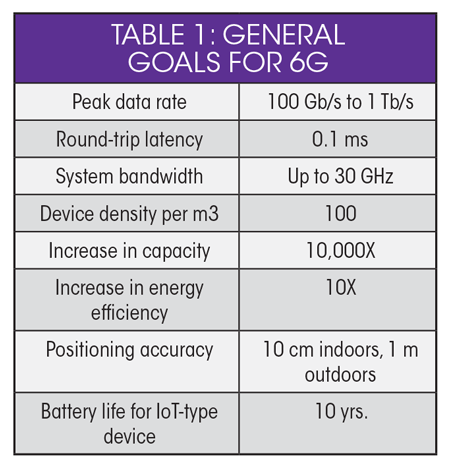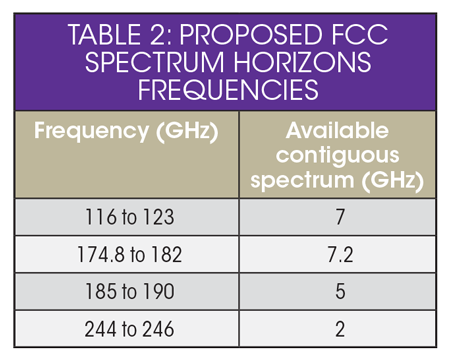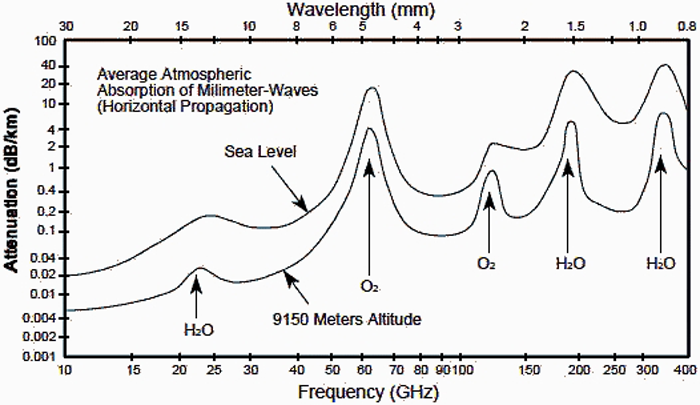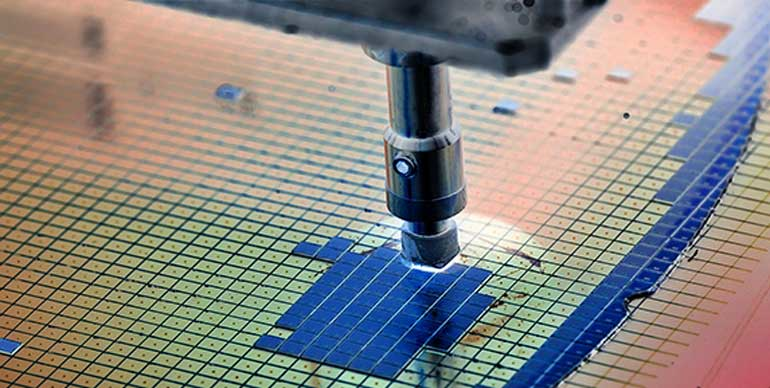This article appeared in Microwaves & RF and has been published here with permission.
What you’ll learn:
- A glimpse of the potential that 6G offers—such as data rates up to 1 Tb/s.
- Millimeter- and terahertz-band may not be the black hole for RF that some foresee.
- Some significant technical hurdles bar the way to 6G’s fruition, but solutions are in the works.
Even though 5G is far from being fully realized, researchers throughout the world are already concentrating on the next generation. There’s obviously considerable speculation about precisely what 6G will be, and while it’s far too early to make precise predictions, it’s not too early to see how researchers are approaching the challenges.
When the details and expectations for 5G were released, there were plenty of skeptics—and many remain that way—as the new standard pushes operating frequencies to orders of magnitude higher than 4G. The highest of those frequencies are reserved only for very-short-range variants of Wi-Fi and a few other applications. That said, infrastructure is already being rapidly deployed at 24 and 28 GHz, with higher frequencies following in the coming years.
By the time 6G arrives, more challenges to overcome will emerge, and in some cases, they will be even more difficult than those for its predecessor. There will nevertheless be more opportunities as well, many beyond what 5G will deliver.
More Revolutionary than Evolutionary
If the history of “cellular” generations is used as a predictor, what’s been defined in each standard was achieved in part by its succeeding generation. That is, some of what was planned for 2G was ultimately achieved in 3G, and 4G delivered a fuller measure of what 3G was intended to achieve but did not. The goal of each generation was primarily to achieve higher data rates and broader coverage.
That changed with 5G, which might be considered a wholesale reinvention of cellular technology, expanding for the first time beyond smartphones, tablets, and laptops to the far broader landscape under the IoT umbrella. It ushered in the era of software-defined architectures for user equipment, infrastructure, and the entire network, and extended the frequencies used by wireless systems well into the millimeter-wave region.
Any one of those advances would arguably be a major achievement—5G achieves them all. When launched around 2030, 6G will attempt to accomplish what 5G did not, whether it’s achieving extremely low latency or multi-gigabit speeds in a broad swath of the country.
6G will likely be of the same magnitude as 5G as it reaches frequencies near the light-wave spectrum, drives downlink speeds to 1 Tb/s, and employs technologies that either don’t yet exist today or have been in development for years without a market to drive them harder. It will also fully enable applications that require latency much lower than what’s ultimately achieved by 5G, and allow for instantaneous communications between consumers, devices, vehicles, and the surrounding environment (Table 1).

However, 6G will offer even more than that, taking advantage of advances in AI and machine learning and enabling such applications as autonomous vehicles, robotic controls, high-definition holographic gaming, and more. All of these apps fit under the categories of wireless cognition, sensing, imaging, wireless communication, and position location and navigation.
6G promises data rates of as much as 1 Tb/s (1 million Mb/s), which is 1,000 times faster than 5G. That will require immense channel bandwidths well north of 1 GHz. The only available spectrum that provides the required bandwidth is between 100 GHz and 3 THz. Not surprisingly, this region has been used only for scientific research, including radio astronomy, the Earth exploration-satellite service (EESS), the space research service (SRS), and to a limited degree, amateur radio.
The FCC recognizes the technological enormity and time required to bring 6G to fruition and, in 2019, initiated a program called New Horizons. It provides an almost rule-free pathway for experimentation at unlicensed frequencies between 95 GHz and 3 THz. Experimental licensing has been employed by the commission many times within its Part 5 Experimental Radio Service (ERS) rules. This time, it creates a new type of license called the Spectrum Horizons Experimental Radio license (or Spectrum Horizons License).
The goal of the program is to lower the barrier to entry by making experimental licenses easy to obtain, with few of the typical hurdles required in conventional licensing. It provides wide flexibility in specifications such as frequency range, power, and emissions, with the only caveat being that the experimenter must refrain from creating interference to existing services.
More than 21 GHz of spectrum will be available, at 116 to 123 GHz, 174.8 to 182 GHz, 185 to 190 GHz, and 244 to 246 GHz (Table 2). Even at lower millimeter-wave frequencies, the available spectrum is immense. For example, the unlicensed band at 60 GHz alone offers available bandwidth equivalent to what’s used today by virtually every licensed and license service from above dc to 7 GHz.

The FCC notes that in addition to traditional communications, these frequencies might have use for data links that enable transmission of wideband, uncompressed high-definition video signals and other high-speed data for other types of applications. As an example, the commission specified that Japan’s NTT used 120-GHz wireless links to provide live TV coverage of the 2008 Beijing Olympics.
Terahertz Trepidations
The view among many scientists and engineers is that the higher the frequency, the higher the loss through space. Therefore, operation in the terahertz region is a fantasy. This position, along with a lack of suitable semiconductor technologies, is arguably one of the major reasons why millimeter wavelengths haven’t been used. However, this is far from a complete picture for several reasons.
First, at the UHF and microwave frequencies currently used for wireless communications, path loss results primarily from molecular absorption that’s very low when compared to higher frequencies. But in the higher reaches of the spectrum, other factors come into play as well, such as scattering from precipitation and foliage (and virtually everything else) that significantly impedes range and reliability. So, it might be expected that at 1 GHz where a wavelength measures 0.3 mm, communications would seem, if not impossible, at least impractical for use by traditional wireless services.
Second, sub-terahertz wavelengths inherently span shorter distances, but the loss from lower to higher frequencies isn’t linear (Fig. 1). This is because the resonant frequencies of oxygen, hydrogen, and other gases in the atmosphere absorb more electromagnetic energy than others. This is why the few applications operating at these wavelengths operate at only specific frequencies. It’s also why the FCC chose the unlicensed bands it did for Spectrum Horizons.
 1. Atmospheric impediments to free-space communications aren’t linear, and “windows” of opportunity make sub-terahertz wireless capability possible.
1. Atmospheric impediments to free-space communications aren’t linear, and “windows” of opportunity make sub-terahertz wireless capability possible.
However, Dr. Ted Rappaport, David Lee/Ernst Weber Professor of Electrical Engineering at the NYU Tandon School of Engineering, founding director of NYU Wireless, and a long-time pioneer in wireless communications, makes an important point: For a given antenna’s effective isotropic radiated power (EIRP), path loss through space decreases quadratically as frequency increases if the antenna aperture is the same size (i.e., number of elements) at each end of the transmission path. It’s been demonstrated that for the same RF output power when this condition is met, the signal strength at 140 GHz in free space is actually 5.7 dB greater than at 73 GHz and 14 dB greater than at 28 GHz.
In fact, according to Rappaport, many millimeter-wave and terahertz bands have remarkably little loss when compared with sub-6-GHz bands, adding only 10 dB/km of loss at frequencies as high as 300 GHz. These frequency bands could easily be used for high-speed 6G mobile wireless networks with up to km-size coverage range, and perhaps even up to 10 km or beyond in fixed applications. In fact, although much of the spectrum between 600 and 800 GHz suffers from 100 to 200 dB/km attenuation, this is only 10 to 20 dB over a 100-m distance, which is the typical radius of a small cell.
It’s been shown that particles such as raindrops, snow, and hail caused substantial attenuation at frequencies above 10 GHz. At 73 GHz, signals attenuate at 10 dB/km in a rain rate of 50 mm/h. Rain attenuation flattens out from 100 GHz to 500 GHz, meaning that rain will not cause any additional attenuation at operating frequencies above 100 GHz.
While all of this may seem to fly in the face of conventional thinking, it considers that at such high frequencies, truly massive amounts of forward gain can be achieved using tiny electronically steered antennas with many elements. This would counteract the effect of atmospheric attenuation while maintaining the same signal-to-noise ratio as at lower frequencies. In short, these antennas will allow mobile systems to operate well into the terahertz region.
Challenges and Solutions
Immense challenges must be overcome before 6G can become a reality. They span from the development of semiconductor technologies able to produce measurable power at sub-terahertz frequencies, to the electronically steered, phased-array antennas required to deliver enough gain to overcome the various factors that make communication extremely difficult in this spectral region.
To achieve data rates of about 100 Gb/s, modulation schemes will need spectral efficiency greater than 14 b/s/Hz, well beyond what’s available today. RF power amplifiers for this coming generation will require the use of silicon germanium (SiGe), silicon-on-insulator (SOI), and BiCMOS semiconductor technologies, and possibly indium phosphide, too. The space needed for base stations can be dramatically reduced as frequency increases, and the size of an antenna element shrinks, and the distance on the array face between array elements being only a few hundred micrometers even in the lower range of the terahertz regime.
Not surprisingly, DARPA is involved in the development of semiconductor technologies for terahertz applications. The agency’s Technologies for Mixed-mode Ultra Scaled Integrated Circuits (T-MUSIC) program is investigating SiGe HBT, CMOS, SOI, and BiCMOS circuit integration in hopes of achieving power amplifiers operating at up to 1 THz. T-MUSIC’s goal is to develop terahertz mixed-mode devices that integrate digital processing and intelligence on the same chip (Fig. 2).
 2. DARPA’s T-MUSIC program aims to combine mixed-mode terahertz devices that integrate digital processing and intelligence on the same chip.
2. DARPA’s T-MUSIC program aims to combine mixed-mode terahertz devices that integrate digital processing and intelligence on the same chip.
The program focuses on advanced materials, device processing, and mixed-mode circuit designs based on an advanced CMOS fabrication platform that it hopes will vastly improve the speed and accuracy of integrated mixed-mode electronics. The T-MUSIC program’s participants (BAE Systems, Raytheon, University of California Los Angeles, University of California San Diego, and the University of Utah) will develop advanced mixed-mode foundry technologies with transistors operating to at least 1 THz, as well as broadband precision mixed-mode integrated circuits.
An antenna array consisting of 1,000 elements can fit into an area of less than 4 cm2 at 250 GHz. For user equipment, this means that mobile devices could host several tens of thousands of antennas, and base stations will become tiny cells with a range of 10 m. The pencil-wide beams produced by these antennas can also reduce interference, jamming, and detection.
Coverage extension technology will be necessary to provide services for drones, ships, and spacecraft as their service areas aren’t fully covered by conventional cellular networks. To remedy this, geostationary, low-earth-orbit satellites (LEOs), and high-altitude pseudo-satellites (HAPS) may be employed to cover mountainous and remote areas, sea, and space, and to provide communication services to new areas. HAPS are garnering more attention because they can be stationed at a fixed location at an altitude of about 20 km, producing wide coverage with a cell radius greater than 50 km on land. In addition, HAPS offer a solution for providing backhaul service to portable base stations during disasters and possibly for industrial IoT scenarios.
Conclusion
The first tangible evidence that 6G can be achieved is still years away, but with industry, academia, and other entities already fully engaged in development, it will be fascinating to watch how the various elements come together. There’s much to be gained when 6G is deployed, well beyond downloading a feature film in two seconds, from extremely precise location and other sensing applications to anti-jam communications where short range is actually desirable, among dozens more.
By 2035, it’s likely that huge advances in software-defined hardware, AI, computing power, and other technologies will have taken place. Networks will evolve from purely terrestrial wireless to encompassing satellites that fill in the gaps where earth-bound platforms can’t reach, and a long list of other advances will be achieved as well. Time will tell how 6G plays out, but like 5G, what once seemed unlikely is now being deployed.
For Further Reading
“A Vision of 6G Wireless Systems: Applications, Trends, Technologies, and Open Research Problems,” Walid Saad, Virginia Tech; Mehdi Bennis, Centre for Wireless Communications, University of Oulu, Finland; and Mingzhe Chen, Future Network of Intelligence Institute, The Chinese University of Hong Kong, Shenzhen, China and Department of Electrical Engineering, Princeton University.
“Opportunities and Challenges for 6G and Beyond,” Theodore S. Rappaport, NYU Wireless, et al., Special Section on Millimeter-wave and Terahertz Propagation, Channel Modeling, and Applications, IEEE Access, June 2019.
“Key Drivers and Research Challenges for 6G Ubiquitous Wireless Intelligence,” University of Oulo (Finland), September 2019.
“5G Evolution and 6G,” NTT DoCoMo, January 2020.
“Spectrum Horizons, Petition for Rulemaking to Allow Unlicensed Operation in the 95-1,000 GHz Band,” Federal Communications Commission, Report and Order, March 21, 2019.


